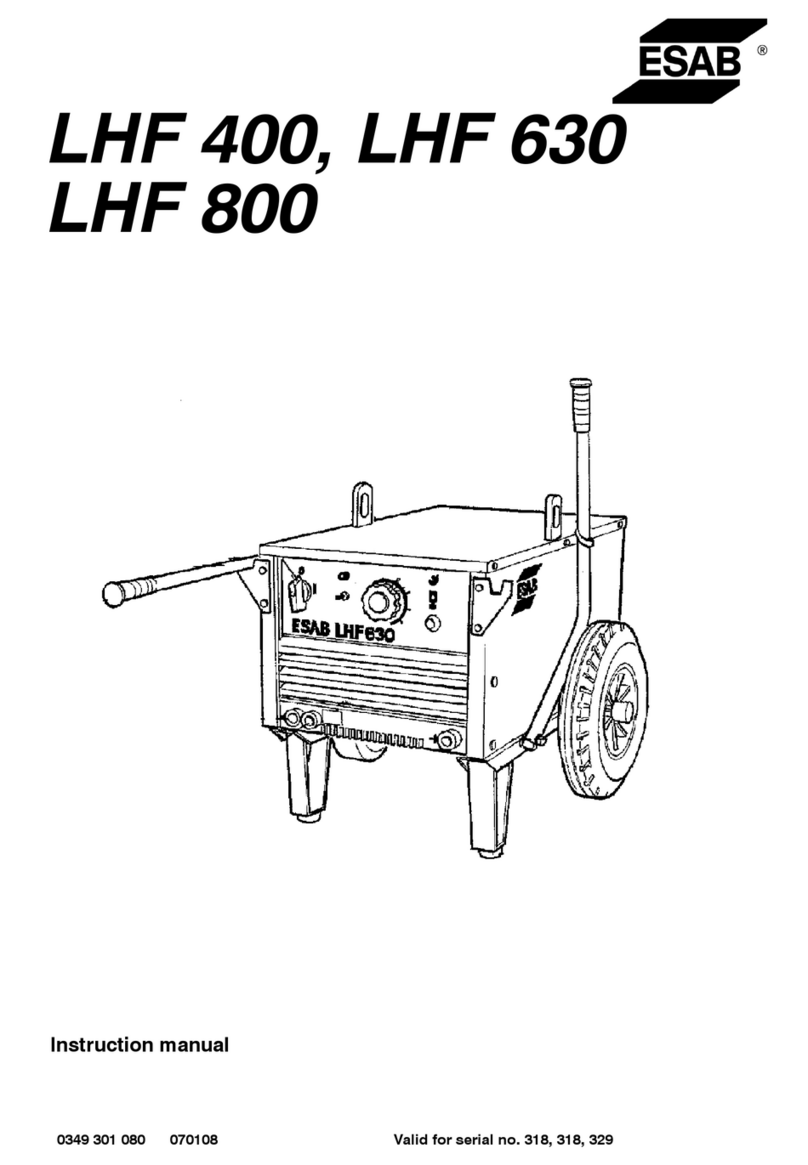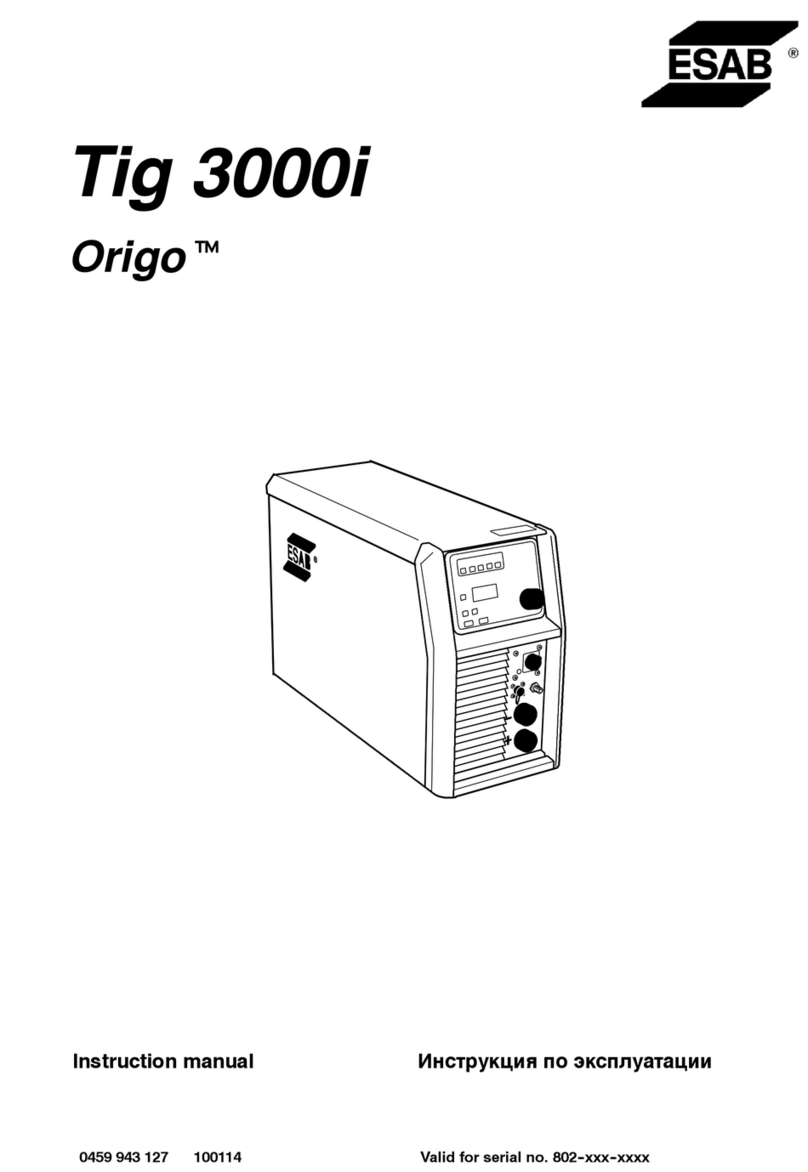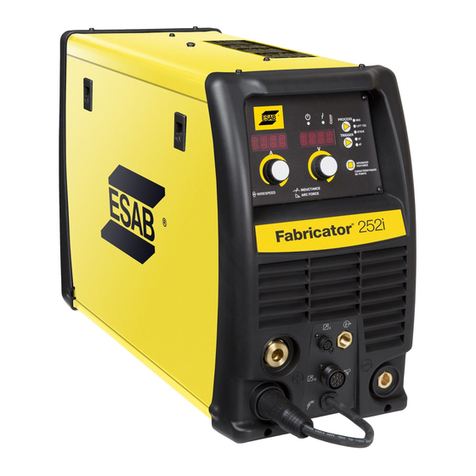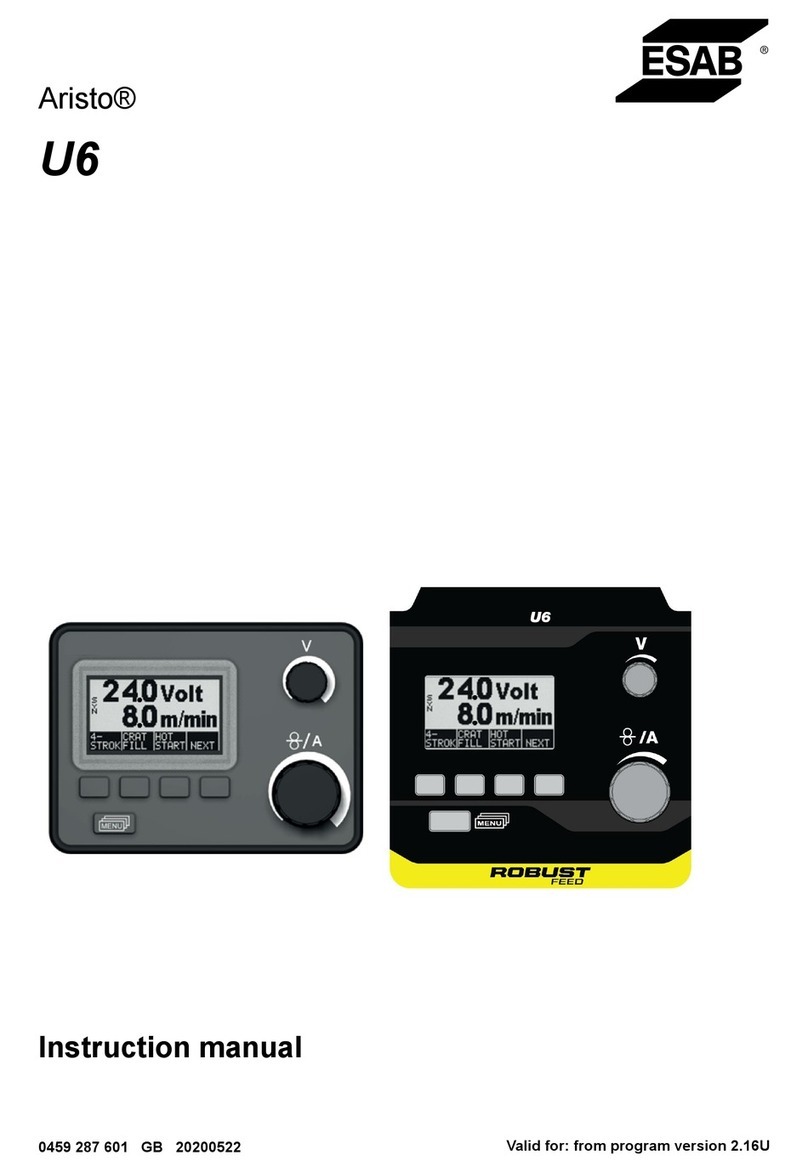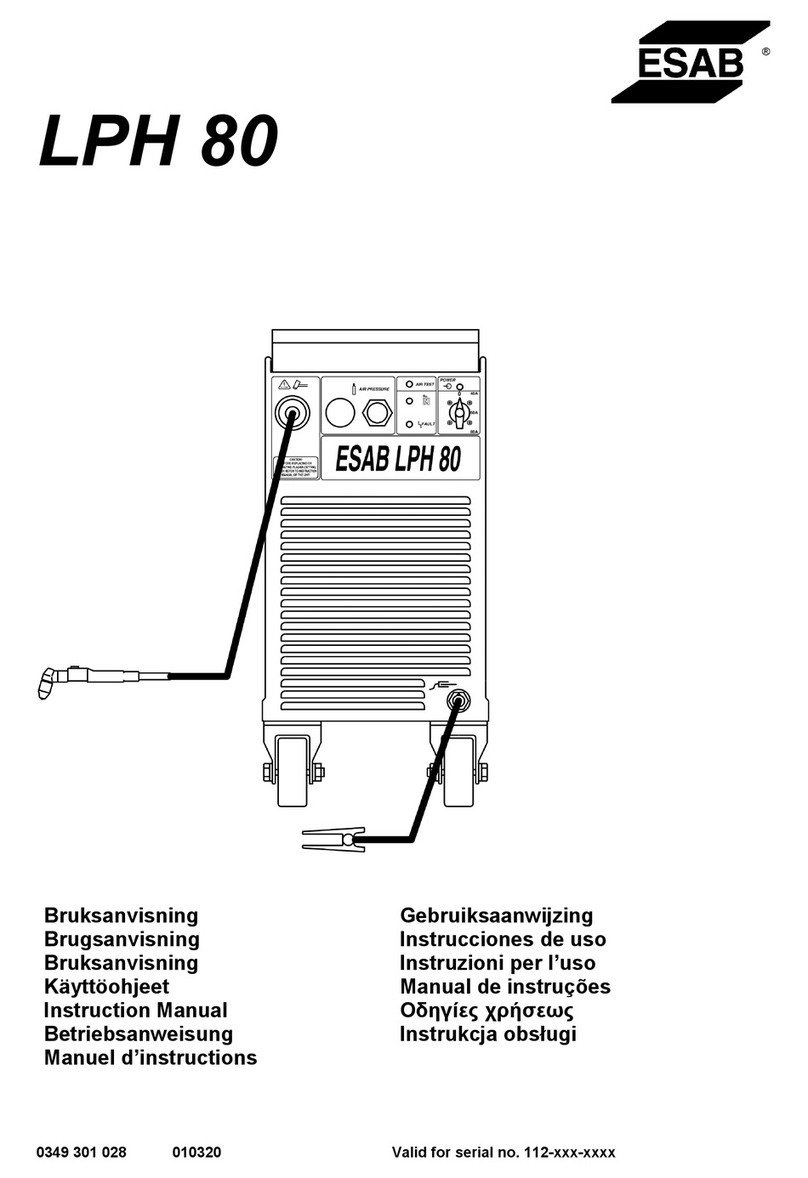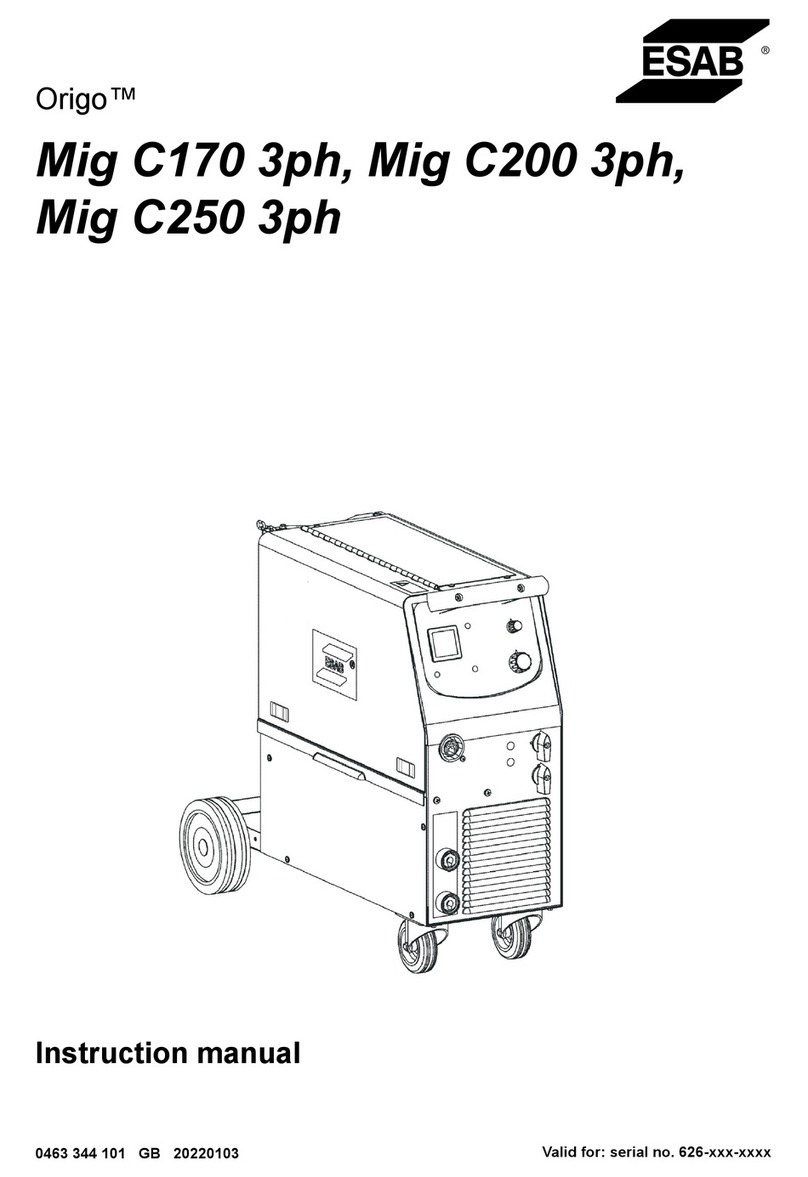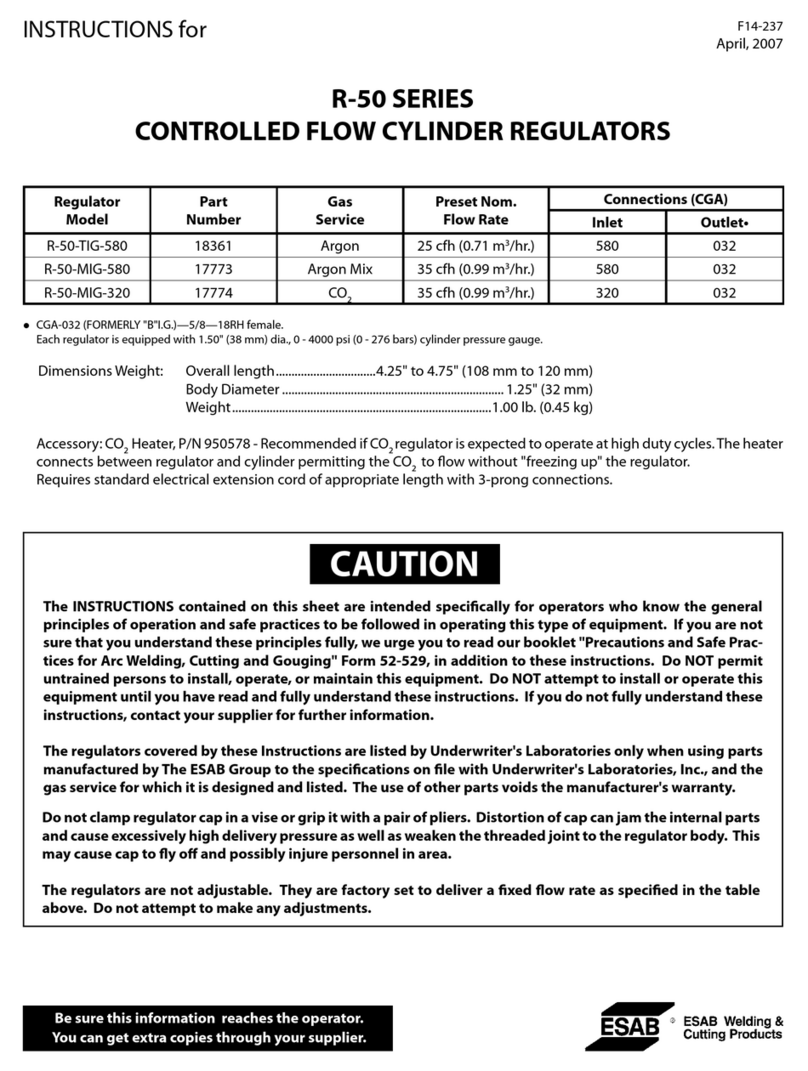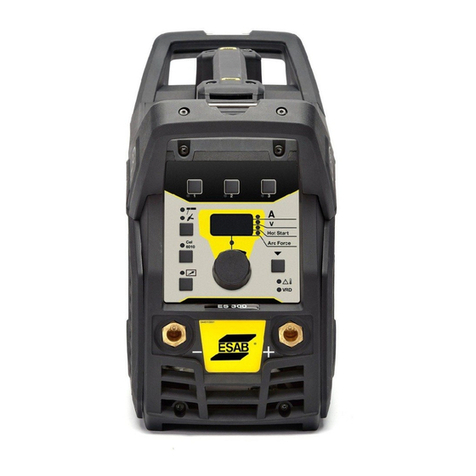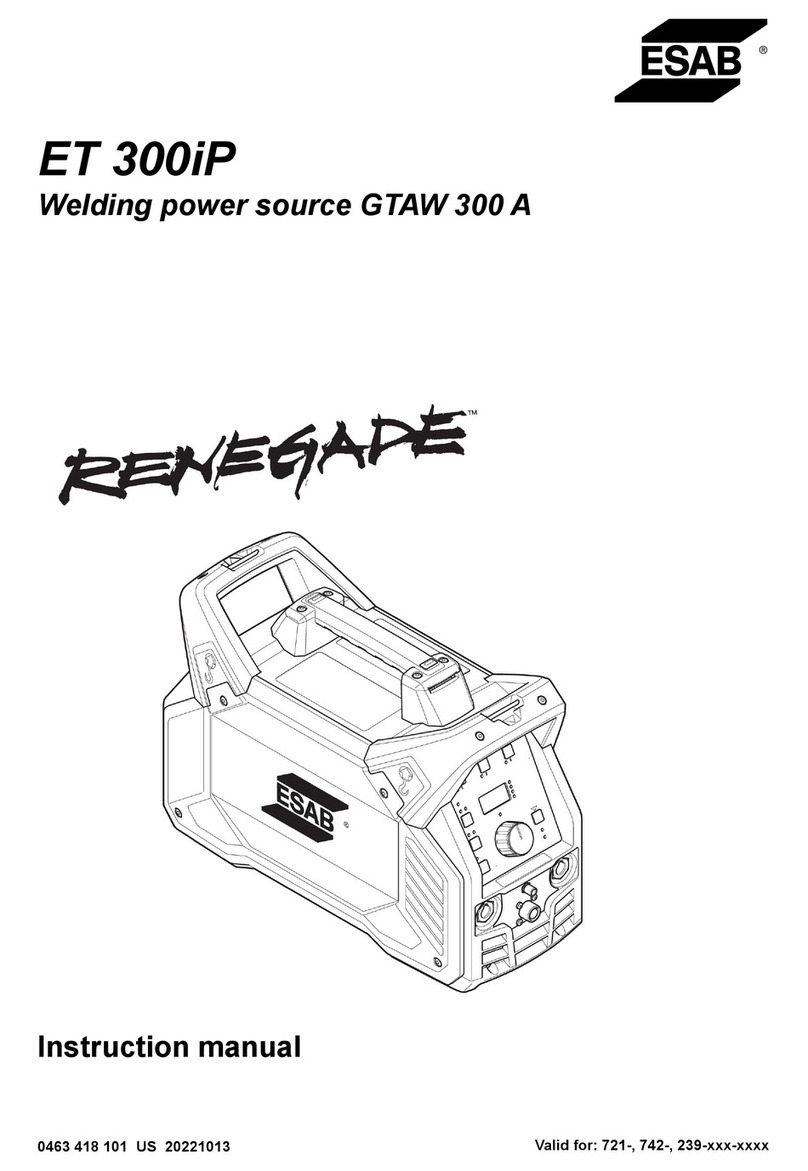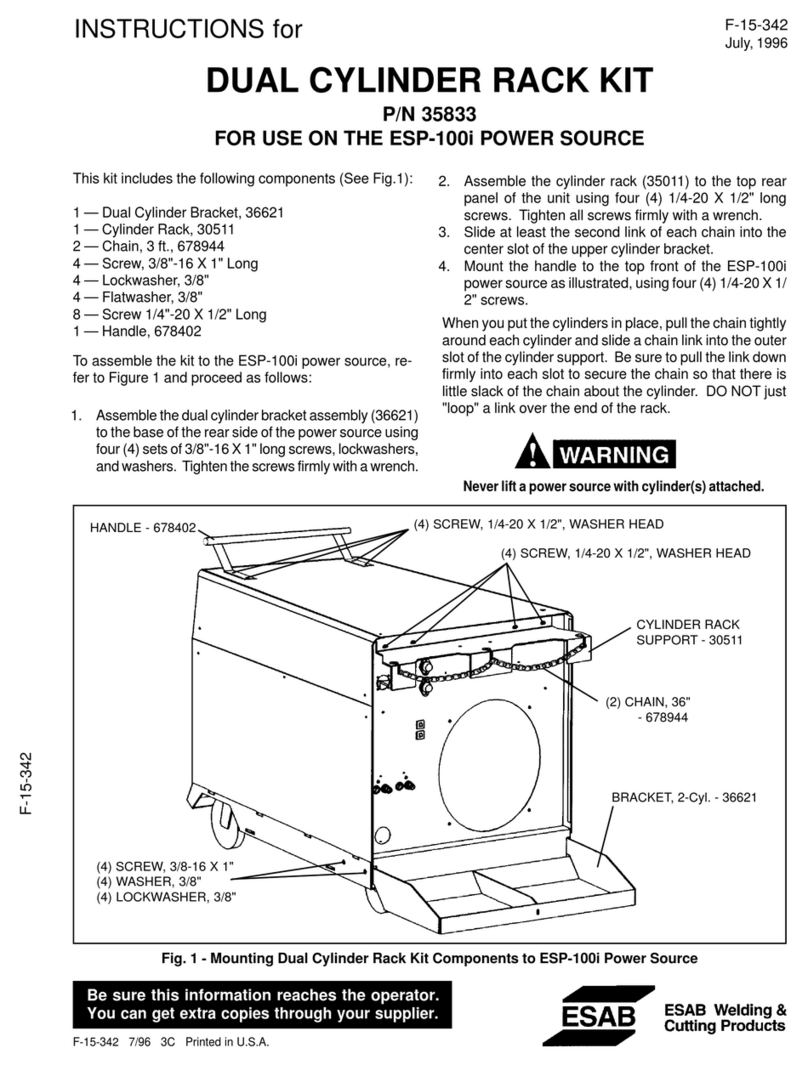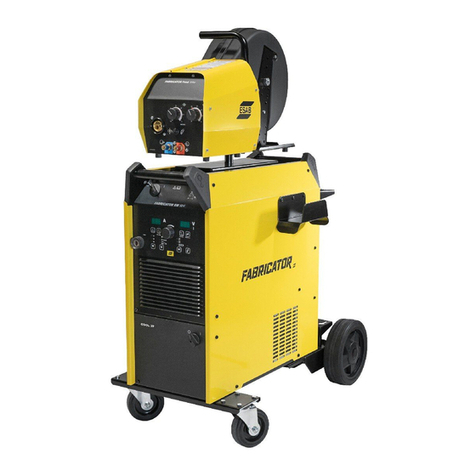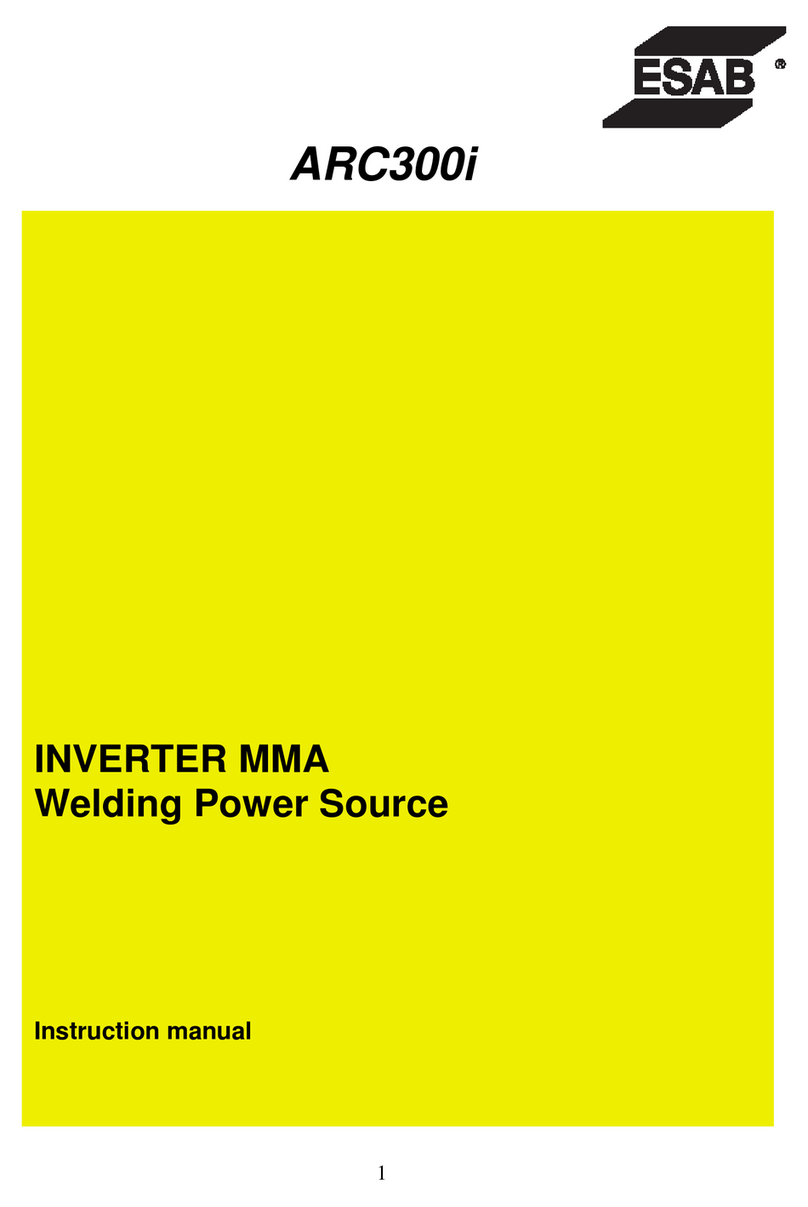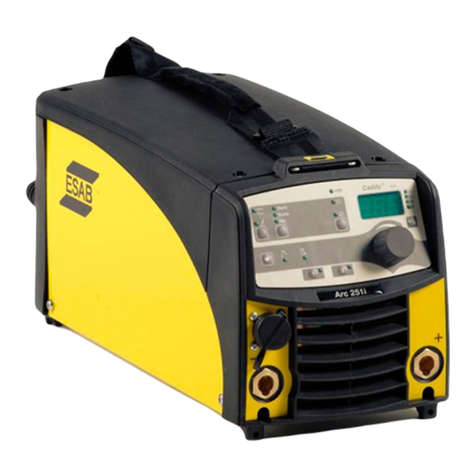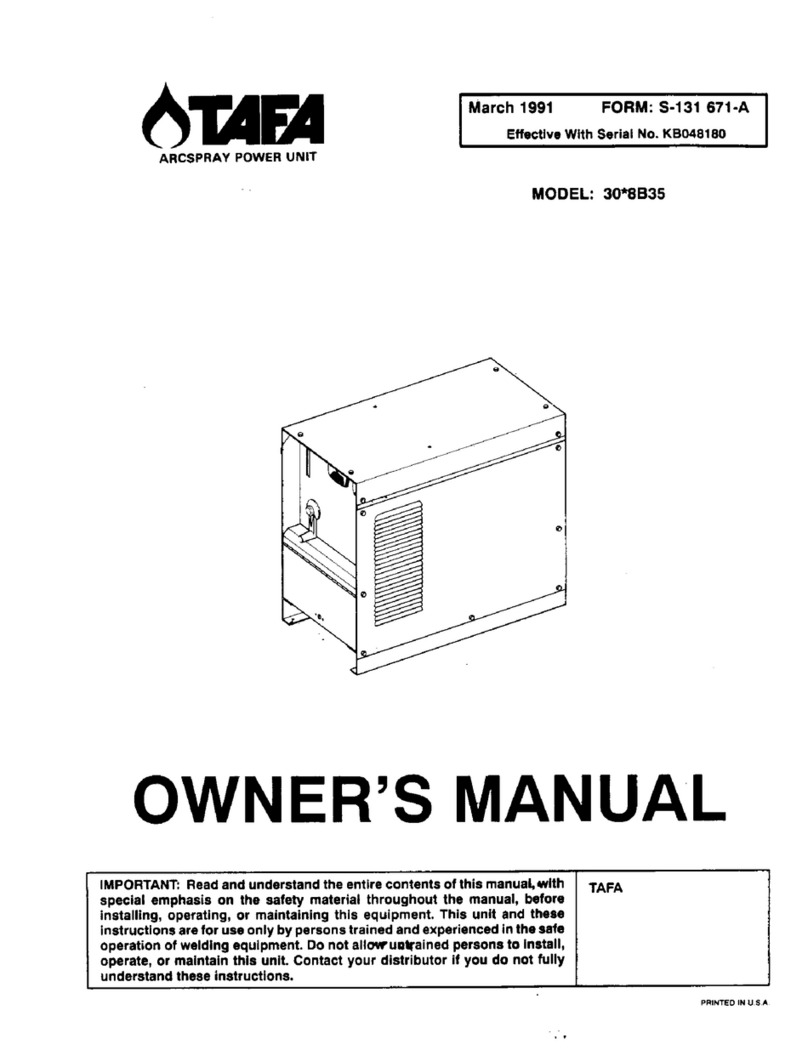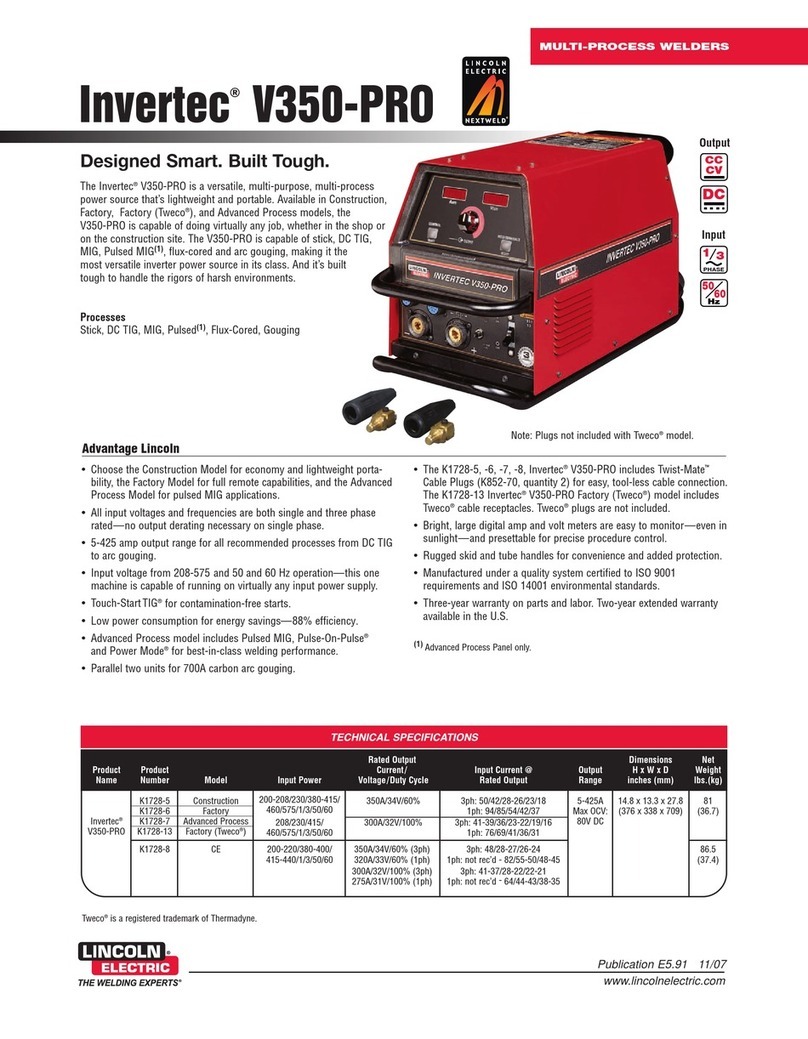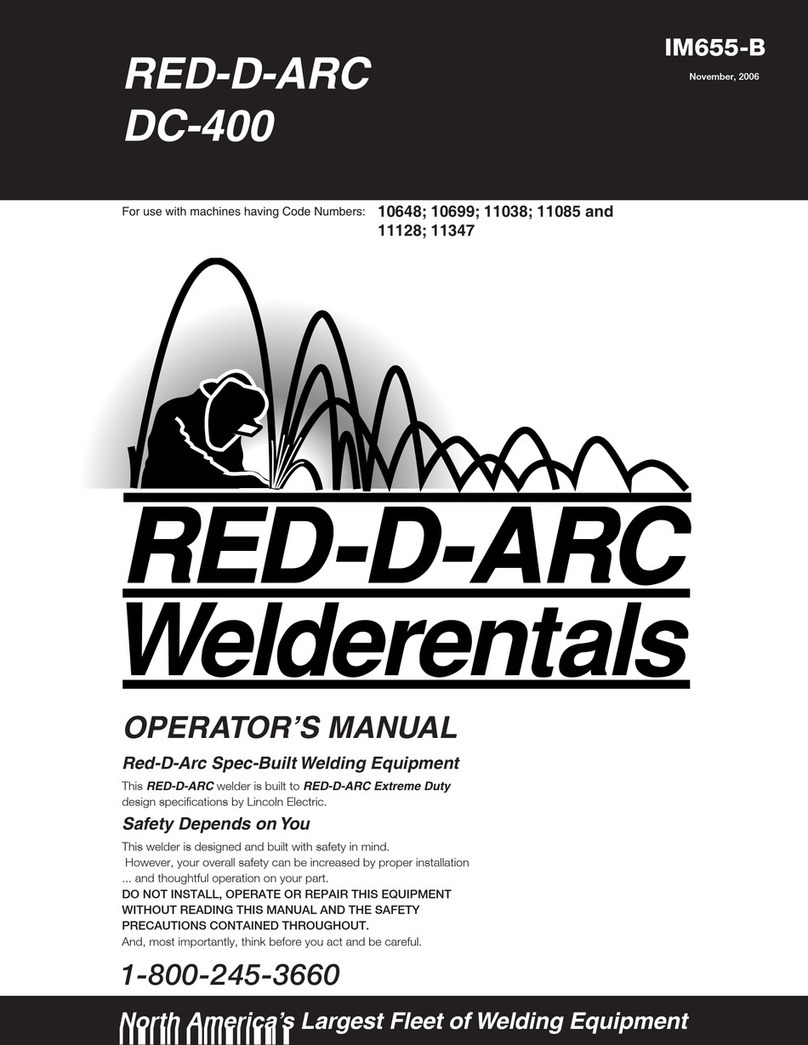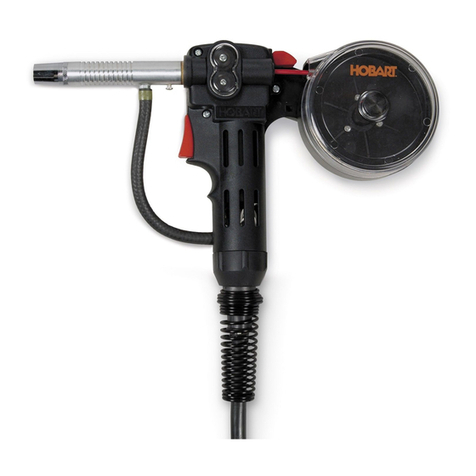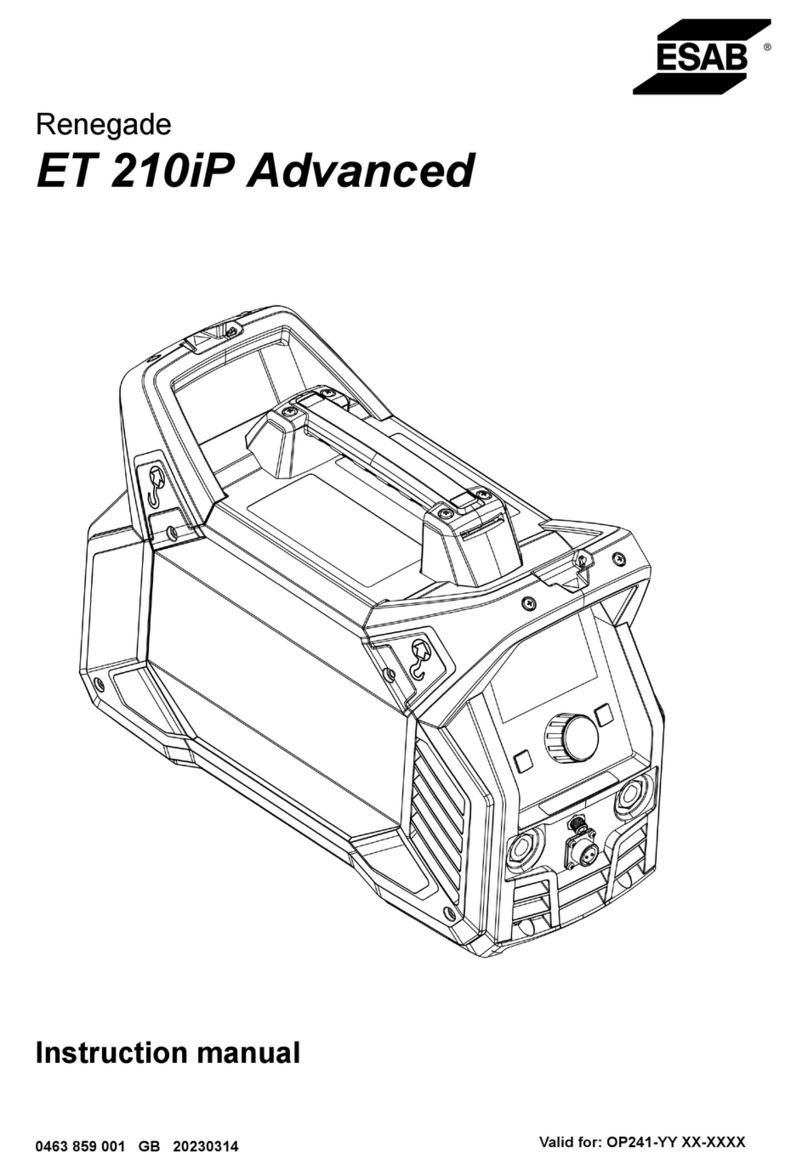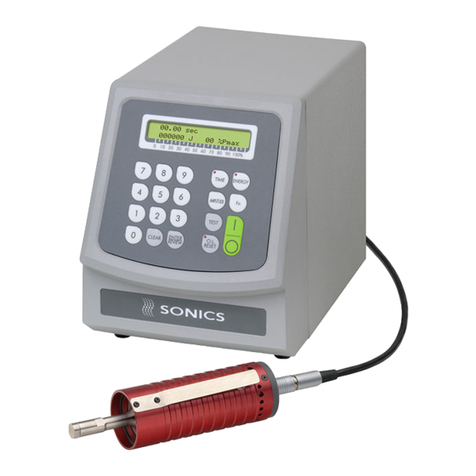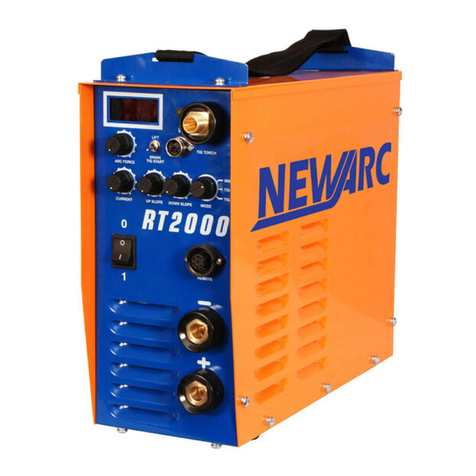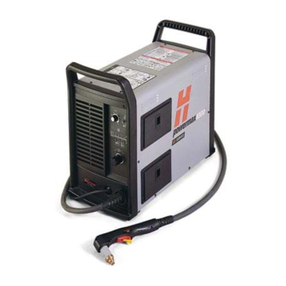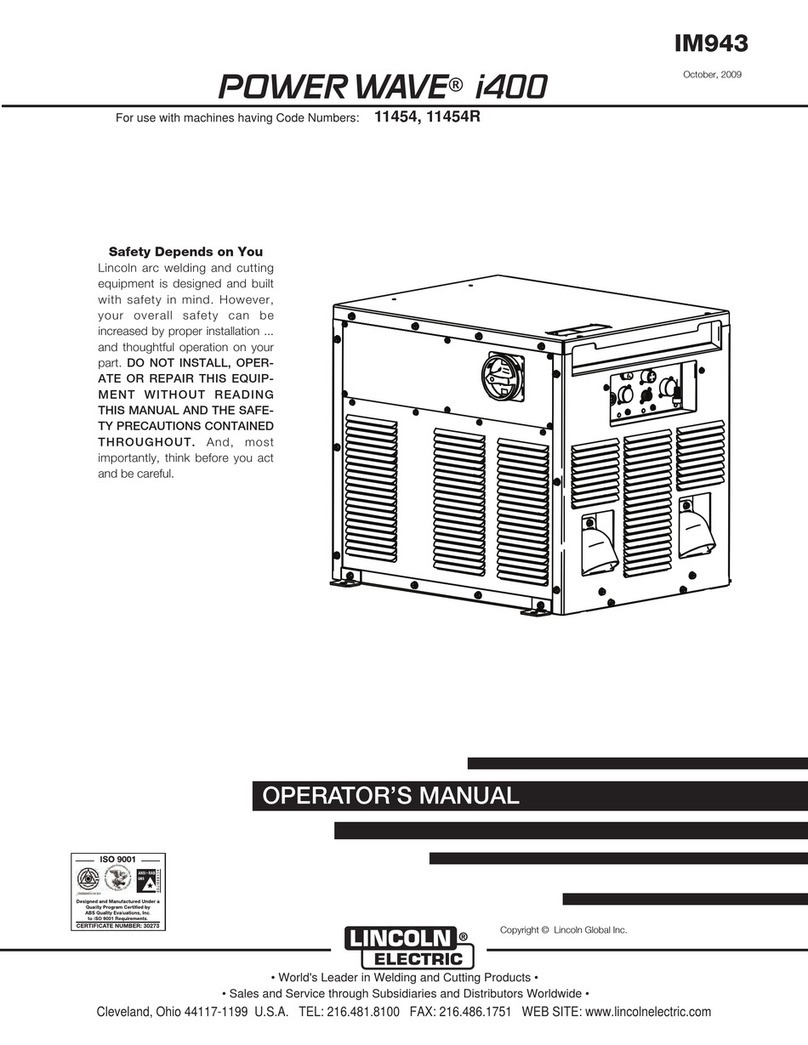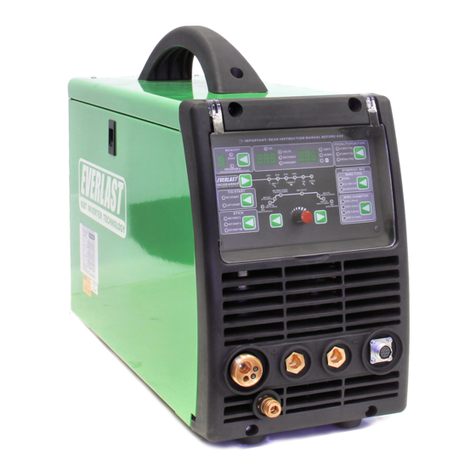
1 SAFETY
0447 954 001 -5- © ESAB AB 2023
1. Welders with pacemakers fitted should consult their doctor before welding. EMF may interfere with
some pacemakers.
2. Exposure to EMF may have other health effects which are unknown.
3. Welders should use the following procedures to minimize exposure to EMF:
a) Route the electrode and work cables together. Secure them with tape when possible.
b) Never coil the torch or work cable around your body.
c) Do not place your body between the torch and work cables. Route cables on the same side of
your body.
d) Connect the work cable to the workpiece as close as possible to the area being welded.
e) Keep the welding power source and cables as far away from your body as possible.
FUMES AND GASES
Fumes and gases, can cause discomfort or harm, particularly in confined
spaces. Shielding gases can cause asphyxiation. Therefore:
1. Keep your head out of the fumes. Do not breathe the fumes and gases.
2. Always provide adequate ventilation in the work area by natural or mechanical means. Do not weld,
cut or gouge on materials such as galvanized steel, stainless steel, copper, zinc, lead beryllium or
cadmium unless positive mechanical ventilation is provided. Do not breathe in the fumes from these
materials.
3. Do not operate near degreasing and spraying operations. The heat or arc can react with chlorinated
hydrocarbon vapors to form phosgene, a highly toxic gas, and other irritant gases.
4. If you develop momentary eye, nose or throat irritation while operating, this is an indication that the
ventilation is not adequate. Stop work and take the necessary steps to improve ventilation in the
work area. Do not continue to operate if physical discomfort persists.
5. Refer to ANSI/ASC Standard Z49.1 for specific ventilation recommendations.
6. WARNING: This product when used for welding or cutting, produces fumes or gases which contain
chemicals known to the State of California to cause birth defects and in some cases cancer
(California Health & Safety Code §25249.5 et seq.)
CYLINDER HANDLING
Cylinders, if mishandled, can rupture and violently release gas. A sudden
rupture of cylinder valve or relief device can injure or kill. Therefore:
1. Locate cylinders away from heat, sparks and flames. Never strike an arc on a cylinder.
2. Use the proper gas for the process and use the proper pressure reducing regulator designed to
operate from the compressed gas cylinder. Do not use adapters. Maintain hoses and fittings in good
condition. Follow the manufacturer's operating instructions for mounting a regulator to a
compressed gas cylinder.
3. Always secure cylinders in an upright position, by chain or strap, to suitable hand trucks,
undercarriages, benches, wall, post or racks. Never secure cylinders to work tables or fixtures
where they may become part of an electrical circuit.
4. When not in use, keep cylinder valves closed. Have valve protection cap in place if regulator is not
connected. Secure and move cylinders by using suitable hand trucks.
MOVING PARTS
Moving parts, such as fans, rotors and belts can cause injury.
Therefore:
1. Keep all doors, panels, guards, and covers closed and securely in place.
2. Stop the engine or drive systems before installing or connecting a unit.
3. Have only qualified people remove covers for maintenance and troubleshooting as necessary
